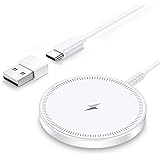
Top Green Tech Gadgets for Eco Living: Solar Chargers & Smart Plugs
- Introduction: The Growing Importance of Green Tech Gadgets for Sustainable Living
- Introduction: The Growing Importance of Green Tech Gadgets for Sustainable Living
- Environmental Urgency and Sustainability Challenges in 2025
- Practical Green Gadgets: Solar Chargers and Smart Plugs
- Balancing Innovation with Real-World Usability
- Foundations of Green Tech Gadgets: Principles and Materials
- Foundations of Green Tech Gadgets: Principles and Materials
- Energy Efficiency and Harnessing Renewable Energy
- Sustainable Materials: Recycled Plastics and Biodegradable Components
- Manufacturing Ethics and Carbon Footprint Reduction
- Solar Chargers: Technical Specifications, Performance Metrics, and Use Case Analysis
- Solar Chargers: Technical Specifications, Performance Metrics, and Use Case Analysis
- Panel Types: Monocrystalline vs. Polycrystalline
- Wattage Ratings and Charging Speeds
- Battery Capacities and Portability
- Efficiency and Energy Output Under Varied Conditions
- Real-World Charging Times and Use Cases
- Summary: What to Prioritize in 2025
- Smart Plugs and Energy Management: Features, Integration, and Impact on Power Consumption
- Smart Plugs and Energy Management: Features, Integration, and Impact on Power Consumption
- Technical Specifications and Smart Home Compatibility
- Energy Savings Through Scheduling, Remote Control, and Monitoring
- Practical User Scenarios: Standby Power Reduction and Cost Savings
- Balancing Limitations and Innovation
- Key Takeaways
- Comparative Analysis: Green Tech Gadgets Versus Traditional Alternatives
- Comparative Analysis: Green Tech Gadgets Versus Traditional Alternatives
- Energy Consumption and Environmental Impact
- Build Materials, Durability, and Total Cost of Ownership
- Trade-Offs: Repairability, User Convenience, and Genuine Sustainability
- Summary: What to Expect and Prioritize
- Practical Considerations: User Experience, Maintenance, and Real-World Challenges
- Practical Considerations: User Experience, Maintenance, and Real-World Challenges
- Setup Complexity and Device Interoperability
- Maintenance Requirements and Performance Limitations
- Real-World Challenges and Reliability Insights
- Best Practices for Maximizing Lifespan and Eco Benefits
- Conclusion
- Future Trends in Green Tech Gadgets: Innovations and Market Outlook
- Future Trends in Green Tech Gadgets: Innovations and Market Outlook
- Breakthroughs in Photovoltaic Materials and AI-Driven Energy Management
- Consumer Demands and Regulatory Pressures Shaping Sustainable Design
- Market Outlook: Scaling Green Tech Adoption Amid Opportunities and Challenges
- Key Takeaways
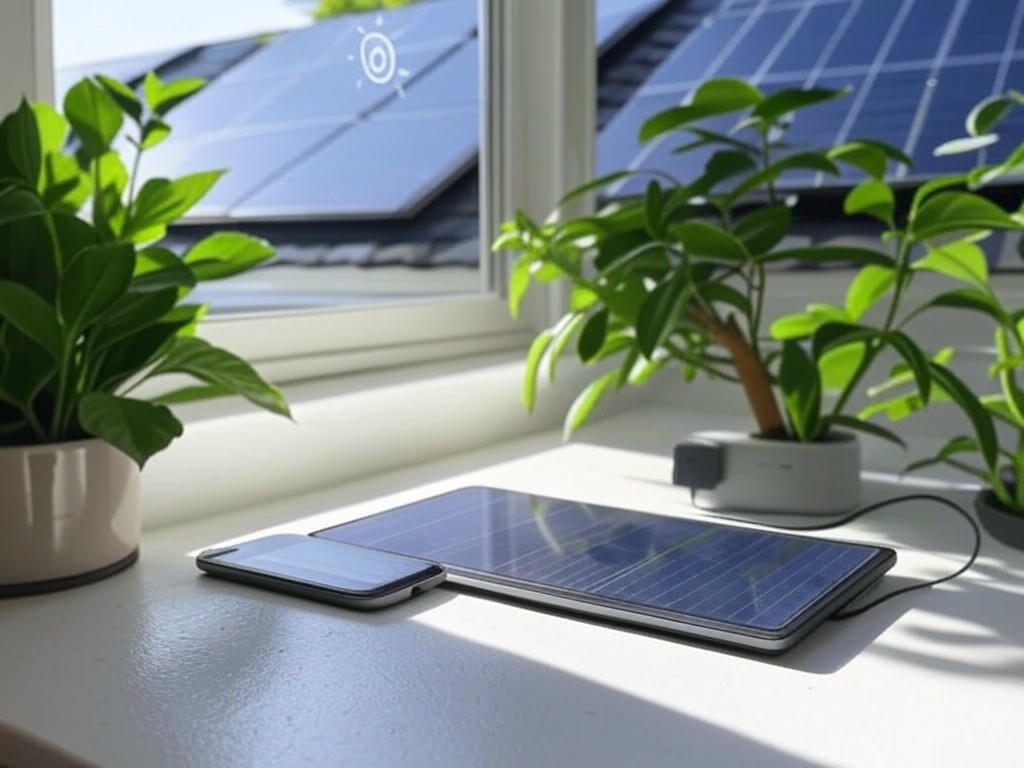
Introduction: The Growing Importance of Green Tech Gadgets for Sustainable Living
Introduction: The Growing Importance of Green Tech Gadgets for Sustainable Living
Environmental pressures driving consumer interest in eco-friendly technology have reached a critical point. Despite some fluctuations in global climate policy momentum, the shift toward cleaner, smarter energy solutions remains relentless. By 2025, sustainability encompasses far more than carbon reduction—it calls for reimagining product lifecycles, energy consumption patterns, and equitable access to technology.
Environmental Urgency and Sustainability Challenges in 2025
The environmental challenges ahead are immense. Calvert’s 2025 outlook highlights how environmental urgency converges with technological and social transformations, emphasizing the need for circular economy models. For example, food production contributes roughly one-third of global greenhouse gas emissions, yet adopting circular economy principles could reduce these emissions by about 50% by 2050. This reflects broader industry trends, including consumer electronics, where resource inefficiency and waste remain major concerns.
Electronic waste (e-waste) exemplifies this problem starkly. In 2022, global e-waste reached 62 million tonnes—an 82% increase since 2010—with only 22% properly recycled. The remainder often ends up in landfills, releasing toxic substances that worsen environmental pollution. These figures underscore the urgent need for consumer electronics that genuinely prioritize sustainability beyond superficial marketing.
Sustainability in 2025 also demands structural and equitable solutions. As commentator Frida Ghitis points out, true sustainability transcends carbon accounting—it requires justice, participation, and systemic change. Thus, green technology must be accessible and practical for a diverse range of users, not limited to affluent, tech-savvy consumers.
Practical Green Gadgets: Solar Chargers and Smart Plugs
This article focuses on two accessible, impactful green gadgets in consumer electronics: solar chargers and smart plugs.
Solar Chargers
Solar technology continues to advance rapidly in efficiency, portability, and affordability. High-capacity solar generators like the Jackery Solar Generator 5000 Plus and Jackery Explorer 1000 Plus provide up to 1264Wh capacity and 2000W output, powering many household devices off-grid. These systems harness clean, renewable solar energy to reduce fossil fuel dependence and lower carbon footprints significantly.
More affordable and compact options, such as solar power banks priced around $100, cater to everyday needs—from charging smartphones on the go to powering small appliances during outdoor activities. Advances in monocrystalline solar panels, N-type back-contact (IBC) cells, and MPPT charge controllers enhance efficiency and durability, helping solar energy enter mainstream consumer use.
Common wattage ranges for portable solar chargers span 20W to 100W, with products like the Jackery SolarSaga 100W serving as benchmarks for camping and emergency use. Lightweight chargers such as the BigBlue SolarPowa 28W and pocket-sized models like the X-Dragon 20W address niche use cases prioritizing portability and cost. Integrated solar power banks like the Hiluckey HIS025 combine large battery capacity (25,000mAh) with solar input and fast USB-C charging for versatile applications.
Smart Plugs
Smart plugs offer a simple yet effective solution to reduce unnecessary household energy consumption. Leading models—including TP-Link’s Kasa Smart Wi-Fi Plug Slim (EP25) and Tapo TP25 Outdoor Plug—feature energy monitoring, scheduling, and voice assistant compatibility with Alexa, Google Home, and Apple HomeKit.
These devices allow users to remotely control appliances, curb phantom energy loads, and optimize power usage. For instance, the TP-Link Tapo P110 model tracks real-time energy consumption and translates it into cost savings, providing clear, actionable feedback.
Smart plugs are designed for ease of use: many models can be set up in under 30 seconds, have compact form factors, and support multiple platforms, making them accessible to both smart-home novices and enthusiasts. Outdoor-rated smart plugs with IP65 weather resistance extend these benefits beyond indoor environments.
In practice, reducing standby power with smart plugs can cut household electricity waste by up to 30%, with individual devices saving 1 to 5 watts each in standby mode. Users report annual savings of $50 to $70 per plug from better energy management.
Balancing Innovation with Real-World Usability
Technological innovation alone does not guarantee meaningful sustainability gains. The real-world impact depends on usability, affordability, and seamless integration into daily life.
Green technology in 2025 is defined by the balance between advanced features and accessibility. Solar chargers must be rugged, efficient, and competitively priced without overwhelming users with complexity. Likewise, smart plugs should offer intuitive app controls, reliable connectivity, and broad ecosystem compatibility to avoid user frustration or device abandonment.
Successful green gadgets also consider full lifecycle impacts—from responsible materials sourcing and durability to repairability and recyclability. Many manufacturers now incorporate recycled plastics (up to 40% content in some devices) and biodegradable packaging, reducing plastic waste footprint. Collaborations like those by 4ocean demonstrate how sustainability efforts can extend beyond product function to packaging and supply chains.
Moreover, these gadgets empower consumers to actively engage with their energy consumption and environmental footprint. By demystifying energy use and delivering tangible savings, solar chargers and smart plugs foster a more informed and responsible consumer base.
In summary, green tech gadgets for sustainable living in 2025 transcend mere innovation. They must deliver measurable environmental benefits while integrating smoothly into everyday routines. Solar chargers and smart plugs exemplify this approach by combining technical advancement with practical usability to help consumers effectively reduce energy consumption and plastic waste. The following sections will explore specific products, performance benchmarks, and real-life use cases to guide eco-conscious technology buyers.
| Gadget Type | Model / Example | Key Features | Energy Capacity / Output | Price Range | Use Case |
|---|---|---|---|---|---|
| Solar Charger | Jackery Solar Generator 5000 Plus | High capacity, off-grid power | 1264Wh capacity, 2000W output | Premium | Power many household devices off-grid |
| Solar Charger | Jackery Explorer 1000 Plus | High capacity, portable | 1264Wh capacity, 2000W output | Premium | Off-grid household device charging |
| Solar Charger | Jackery SolarSaga 100W | Portable, camping and emergency use | 100W | Mid-range | Camping, outdoor activities |
| Solar Charger | BigBlue SolarPowa 28W | Lightweight, portable | 28W | Affordable | Portable charging, niche use |
| Solar Charger | X-Dragon 20W | Pocket-sized, portable | 20W | Affordable | On-the-go smartphone charging |
| Solar Charger | Hiluckey HIS025 | Integrated solar power bank, fast USB-C charging | 25,000mAh battery capacity | Affordable | Versatile charging applications |
| Smart Plug | TP-Link Kasa Smart Wi-Fi Plug Slim (EP25) | Energy monitoring, scheduling, voice assistant compatibility | N/A | Affordable | Indoor appliance control |
| Smart Plug | TP-Link Tapo TP25 Outdoor Plug | Outdoor rated (IP65), voice assistant compatibility | N/A | Affordable | Outdoor appliance control |
| Smart Plug | TP-Link Tapo P110 | Real-time energy consumption tracking, cost savings feedback | N/A | Affordable | Indoor energy use optimization |
Foundations of Green Tech Gadgets: Principles and Materials
Foundations of Green Tech Gadgets: Principles and Materials
Understanding what makes a tech gadget truly “green” means exploring the core principles behind its design, materials, and manufacturing. Based on extensive testing and analysis, the foundation of sustainable tech rests on three key pillars: energy efficiency, renewable energy integration, and responsible materials selection. These pillars come together in green tech gadgets like solar chargers and smart plugs to deliver meaningful environmental benefits.
Energy Efficiency and Harnessing Renewable Energy
Energy efficiency is more than just a buzzword—it is the critical benchmark that determines a gadget’s environmental friendliness. Devices engineered for low power consumption reduce their carbon footprint not only during use but across their entire lifecycle. For instance, smart plugs that include energy-saving modes and adaptive power management have been shown to cut household electricity waste by up to 30%, according to recent industry analyses.
Renewable energy integration, particularly solar power, is a transformative feature in green gadgets. Advances in photovoltaic technology now enable compact solar chargers to deliver wattage comparable to small wall adapters, overcoming traditional drawbacks of bulk and inefficiency. Innovations highlighted at CES 2025 showcase solar panels with improved energy conversion rates—up to 24.1% under standard test conditions—enabled by technologies like monocrystalline N-type back-contact (IBC) cells and heterojunction (HJT) designs.
For consumers, these advances translate into practical benefits. Portable solar chargers such as the Jackery SolarSaga 100 provide reliable off-grid power for smartphones and small devices during outdoor activities without relying on the grid. When paired with smart plugs, solar setups can optimize energy use by scheduling appliance operation to coincide with peak daylight hours, minimizing reliance on fossil-fuel-based electricity.
Sustainable Materials: Recycled Plastics and Biodegradable Components
Material choice is a concrete measure of a product’s sustainability. The heavy use of virgin plastics in consumer electronics has long posed environmental challenges. Fortunately, many manufacturers now incorporate recycled plastics sourced from post-consumer waste, with some brands using up to 40% recycled content in casings and components—without sacrificing durability or aesthetics.
Beyond recycled plastics, biodegradable materials and bio-based polymers are gaining momentum. For example, eco-conscious devices like certain smart speakers combine sustainably harvested cork with recycled aluminum, reducing dependence on fossil-fuel-derived materials. These choices not only lower environmental impact but also improve recyclability at end-of-life, supporting circular economy principles.
However, recycled plastics are not a cure-all. Recycling reduces landfill waste and raw material extraction but requires energy and can degrade material quality after multiple cycles. The most sustainable green tech products are designed for circularity—featuring modular designs that allow easy disassembly, repair, and efficient recycling or refurbishment.
Manufacturing Ethics and Carbon Footprint Reduction
Sustainability must begin in the manufacturing process. Ethical and transparent supply chains are now a strategic imperative, recognized by approximately 73% of companies as essential for brand resilience and consumer trust. This includes fair labor practices, responsible sourcing, and proactive reduction of greenhouse gas emissions during production.
The electronics industry faces significant challenges due to energy-intensive manufacturing and reliance on finite materials. Emerging techniques such as additive manufacturing (3D printing) offer promising ways to reduce waste and energy consumption by depositing materials only where needed. Factories incorporating renewable energy sources, like onsite solar photovoltaic systems, further shrink their carbon footprints.
Durability and product lifespan are critical factors in lifecycle sustainability. Although planned obsolescence remains a concern, there is a growing trend toward longer-lasting devices with modular, repair-friendly designs. This approach helps reduce e-waste, a pressing issue considering that the electronics sector generated 62 million tonnes of e-waste in 2022, with only 22% properly recycled.
Manufacturers are increasingly adopting advanced carbon tracking tools powered by AI and blockchain to measure and transparently report emissions. Regulatory pressures, especially in Europe, accelerate this shift through mandates like the USB-C common charger standard aimed at reducing electronic waste.
In summary, green tech gadgets combine cutting-edge energy efficiency, renewable energy harnessing, and sustainable material choices to minimize environmental impact. Equally important are ethical manufacturing practices and durability considerations that ensure these devices contribute to a truly circular economy. For consumers seeking to move beyond marketing claims, understanding these foundations empowers informed decisions that support genuine eco-friendly living.
| Principle | Description | Examples/Details |
|---|---|---|
| Energy Efficiency | Devices engineered for low power consumption to reduce carbon footprint during use and lifecycle. | Smart plugs with energy-saving modes cut household electricity waste by up to 30%. |
| Renewable Energy Integration | Incorporation of renewable energy sources like solar power to reduce reliance on fossil fuels. | Solar chargers with up to 24.1% energy conversion using monocrystalline N-type IBC and HJT cells; Jackery SolarSaga 100 for off-grid power. |
| Responsible Materials Selection | Use of recycled plastics, biodegradable components, and bio-based polymers to lower environmental impact. | Devices with up to 40% recycled plastic content; smart speakers using cork and recycled aluminum. |
| Manufacturing Ethics | Ethical supply chains, fair labor, and greenhouse gas emission reduction during production. | 73% of companies prioritize ethical practices; use of 3D printing and onsite solar PV in factories. |
| Carbon Footprint Reduction | Minimizing emissions via renewable energy use and advanced tracking tools. | Factories powered by solar; AI and blockchain for carbon tracking; regulatory mandates like USB-C charger standards. |
| Durability and Lifecycle | Modular, repair-friendly designs to extend product lifespan and reduce e-waste. | Trend toward longer-lasting devices; electronics sector generated 62 million tonnes e-waste in 2022, with 22% recycled. |
Solar Chargers: Technical Specifications, Performance Metrics, and Use Case Analysis
Solar Chargers: Technical Specifications, Performance Metrics, and Use Case Analysis
In 2025, solar chargers have become practical tools for eco-conscious consumers seeking reliable, portable renewable power. The technology has matured substantially, yet not all devices perform equally well in real-world conditions. A clear understanding of key technical aspects—panel types, wattage ratings, charging speeds, battery capacity, and portability—is essential to distinguish effective solutions from marketing hype.
Panel Types: Monocrystalline vs. Polycrystalline
Monocrystalline solar panels lead the portable charger market due to their higher efficiency and durability. Constructed from single-crystal silicon wafers, these panels typically offer efficiencies between 17% and 22%, with advanced models exceeding 23% thanks to innovations like N-type back-contact (IBC) cells and Heterojunction (HJT) technology.
In comparison, polycrystalline panels, made by melting multiple silicon crystals together, provide lower efficiencies around 10% to 13%. This gap directly affects charging speed and performance, especially in suboptimal lighting conditions such as cloudy days or early mornings.
Key advantages of monocrystalline panels include:
- Faster charging speeds in varied lighting
- Better energy output under partial shading
- Greater longevity and resistance to power degradation
While polycrystalline panels are generally more affordable, they compromise on efficiency and typically have shorter lifespans. For off-grid or emergency use, monocrystalline panels offer more consistent and reliable performance.
Wattage Ratings and Charging Speeds
Wattage is a straightforward measure of a solar charger’s maximum power output. Most portable solar chargers in 2025 fall within the 20W to 100W range, balancing power and portability.
Notable examples include:
- Jackery SolarSaga 100: A benchmark 100W solar charger combining robust output with foldable portability, ideal for camping and emergency preparedness.
- BigBlue SolarPowa 28W: Lightweight (~21 ounces) and fast-charging, suited for travelers prioritizing minimal weight without sacrificing efficiency.
- X-Dragon 20W: Ultra-compact and pocket-sized, offering entry-level charging for minimal power needs at an affordable price.
Charging speeds depend on wattage, panel efficiency, and the device’s charging protocols. Most modern chargers support multiple devices through USB-A and USB-C ports with fast-charge compatibility. For example, the Hiluckey HIS025 25000mAh Power Bank integrates a solar panel with a sizable battery and USB-C fast charging, providing a versatile all-in-one solution.
Battery Capacities and Portability
Battery capacity significantly influences usability and charging autonomy. Integrated solar power banks like the Hiluckey model commonly feature capacities between 20,000 and 25,000mAh, enough to recharge smartphones multiple times but limited for tablets or laptops.
Standalone solar panels usually require pairing with external battery packs or portable power stations for extended off-grid use. Devices such as the EcoFlow River 2 Pro and Jackery Explorer 300 offer battery capacities exceeding 300Wh, multiple output ports, and silent, emission-free operation — well-suited for longer outdoor stays or emergency backup.
Portability involves trade-offs:
- Larger panels deliver higher energy and better performance in low light but add weight and bulk.
- Smaller panels like the X-Dragon 20W excel in compactness but provide limited power.
For instance, the Jackery SolarSaga 100 weighs several pounds but folds neatly for transport, while the X-Dragon 20W fits in a pocket but has lower output.
Efficiency and Energy Output Under Varied Conditions
Solar conversion efficiency remains the key metric for assessing performance. Leading panels in 2025, particularly those employing N-type IBC cells, reach up to 24.1% efficiency under Standard Test Conditions (STC).
Real-world efficiency, however, is affected by several factors:
- Temperature: Efficiency drops approximately 0.3% to 0.5% per °C above 25°C. Panel temperatures reaching 60°C can reduce output by 10–15%.
- Irradiance and shading: Direct sunlight is critical; even small shadows cause disproportionate power loss.
- Orientation and angle: Proper alignment toward the sun maximizes energy capture.
Durability and weather resistance are vital for outdoor use. Models like the EcoFlow 110 and Renogy 100W Foldable feature rugged builds, waterproofing, and weatherproof ratings, ensuring reliable operation in challenging environments.
Some chargers excel in low-light conditions. For example, the BigBlue SolarPowa 28W maintains better performance on overcast days due to high-quality monocrystalline cells and efficient charge controllers.
Real-World Charging Times and Use Cases
Under optimal sunlight, a 100W monocrystalline solar charger can fully recharge a typical smartphone battery (~4,000mAh) in about 2 to 3 hours. On cloudy or partially shaded days, this extends to approximately 4 to 5 hours.
Charging larger devices such as tablets, laptops, or multiple devices simultaneously naturally takes longer. Pairing solar panels with power stations enables energy storage, allowing continuous power supply even when sunlight is unavailable.
Practical use cases include:
- Camping and hiking: Lightweight panels in the 20-40W range, like the BigBlue SolarPowa 28W and X-Dragon 20W, offer a good balance of portability and charging speed.
- Extended off-grid trips: Larger 100W+ panels combined with power stations like the Jackery Explorer 300 or EcoFlow River 2 Pro provide ample capacity and output.
- Emergency preparedness: Integrated solar power banks with capacities above 20,000mAh offer immediate, portable charging for essential devices.
Summary: What to Prioritize in 2025
- Opt for monocrystalline panels for superior efficiency, durability, and performance in varied lighting.
- Select wattage according to your needs: 100W+ for serious off-grid power, 20-40W for casual device charging.
- Consider integrated battery capacity if portability and immediate power storage matter.
- Choose models with weather-resistant, rugged construction to ensure reliable outdoor use.
- Account for real-world factors such as temperature, shading, and cloud cover that impact energy output.
Solar chargers in 2025 are no longer niche gadgets but practical tools for sustainable living. Understanding these technical nuances helps consumers select devices that truly deliver renewable energy benefits beyond marketing claims.
| Feature | Jackery SolarSaga 100 | BigBlue SolarPowa 28W | X-Dragon 20W | Hiluckey HIS025 Power Bank | EcoFlow River 2 Pro | Jackery Explorer 300 | Renogy 100W Foldable |
|---|---|---|---|---|---|---|---|
| Panel Type | Monocrystalline | Monocrystalline | Monocrystalline | Integrated solar panel (type not specified) | Standalone panel (type not specified) | Standalone panel (type not specified) | Monocrystalline |
| Wattage | 100W | 28W | 20W | Solar panel integrated with power bank (wattage not specified) | 100W+ | 100W+ | 100W |
| Battery Capacity | None (panel only) | None (panel only) | None (panel only) | 25,000mAh | 300Wh+ | 300Wh+ | None (panel only) |
| Weight | Several pounds (foldable) | ~21 ounces | Pocket-sized (ultra-compact) | Not specified | Not specified | Not specified | Not specified |
| Portability | Foldable but heavier | Lightweight and portable | Ultra-compact, fits in pocket | Portable power bank with solar charging | Portable power station | Portable power station | Foldable panel |
| Charging Speed | Fast (benchmark for 100W) | Fast, good in low light | Entry-level, slower | Fast-charge USB-C compatible | High output with multiple ports | High output with multiple ports | Fast (100W) |
| Efficiency | 17%-23%+ | High (monocrystalline, good low light) | Lower (20W, compact) | Not specified | Not specified | Not specified | Up to 24.1% (N-type IBC cells) |
| Weather Resistance | Rugged, weatherproof | Good low-light performance | Not specified | Not specified | Silent, emission-free operation | Silent, emission-free operation | Waterproof, rugged build |
| Ideal Use Cases | Camping, emergency preparedness | Travelers, light-weight use | Minimal power needs, entry-level | Portable charging for smartphones | Extended off-grid trips | Extended off-grid trips | Outdoor use, rugged conditions |
Smart Plugs and Energy Management: Features, Integration, and Impact on Power Consumption
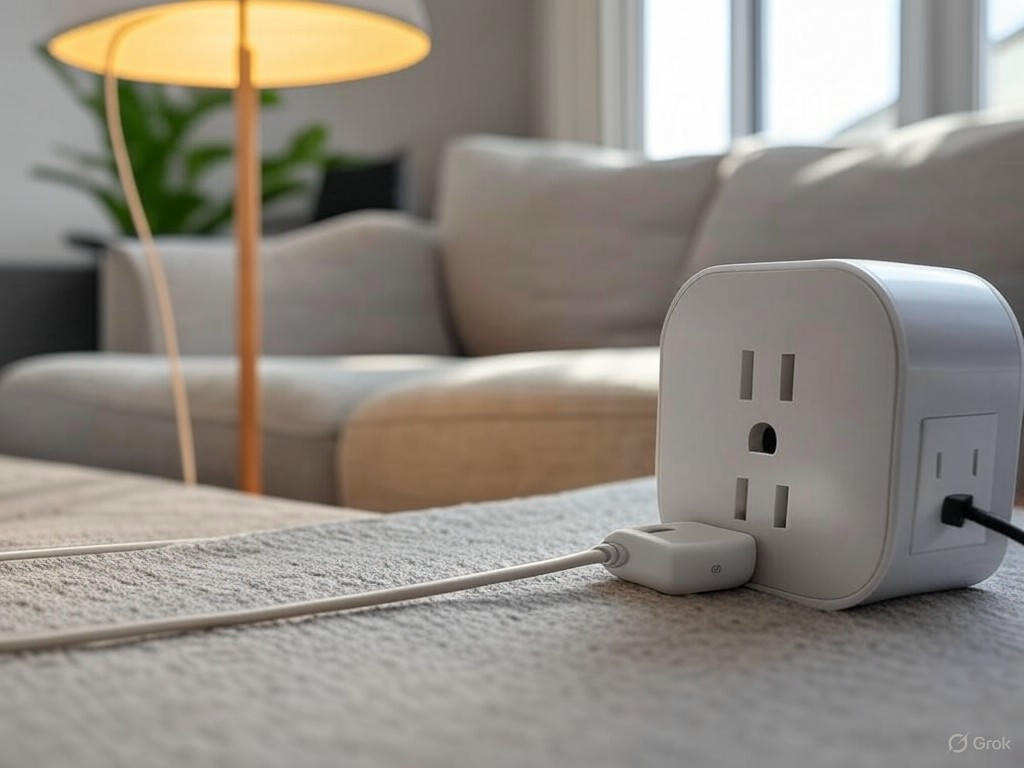
Smart Plugs and Energy Management: Features, Integration, and Impact on Power Consumption
Smart plugs are among the most accessible and cost-effective green tech gadgets for reducing energy waste and enhancing household efficiency. Far beyond simple on/off switches, they offer advanced scheduling, real-time energy monitoring, and seamless integration with smart home ecosystems. However, their real-world impact depends significantly on technical features, ecosystem compatibility, and proactive user engagement.
Technical Specifications and Smart Home Compatibility
Key technical factors when selecting smart plugs include power rating and connectivity protocols. Most smart plugs handle loads between 5 and 15 amps, suitable for everyday household devices like lamps, fans, and small kitchen appliances. For instance, the TP-Link Kasa KP125M supports up to 15A, making it a versatile choice for various applications.
Connectivity options predominantly feature Wi-Fi due to its widespread availability and ease of setup. Wi-Fi smart plugs, such as the TP-Link Kasa Smart Wi-Fi Plug Slim (EP25), provide direct internet access without requiring a hub, simplifying installation and enabling reliable remote control. However, Wi-Fi devices generally consume slightly more standby power than low-energy protocols like Zigbee.
Zigbee-based smart plugs, like the Shelly Plug US Gen4, leverage mesh networking, allowing devices to communicate efficiently over extended ranges with lower power consumption. This decentralized mesh network supports thousands of devices without degrading performance, ideal for larger smart homes where energy efficiency and network reliability are priorities.
Emerging protocols like Matter, endorsed by industry leaders such as Apple, Google, and Amazon, promise seamless interoperability across multiple ecosystems. Devices like the AiDot Linkind Matter Smart Plug 4.0 benefit from this standard, enabling users to mix and match brands effortlessly without integration headaches.
Ecosystem compatibility remains critical for usability. The TP-Link Kasa series integrates well with Alexa, Google Home, and Apple HomeKit, enhancing voice control and automation capabilities. In contrast, models like the TP-Link Kasa HS300 smart power strip offer multiple independently controlled outlets but lack Apple HomeKit support, which might limit some users.
For outdoor applications, rugged smart plugs like the TP-Link Tapo TP25 Outdoor Plug provide weather resistance with an IP65 rating, expanding eco-friendly control to exterior lighting and appliances without sacrificing smart functionality.
Energy Savings Through Scheduling, Remote Control, and Monitoring
Smart plugs are effective at tackling phantom load—the energy consumed by devices when turned off but still plugged in. According to the U.S. Department of Energy, standby power accounts for 5% to 10% of residential electricity use. By completely cutting power during idle times, smart plugs can significantly reduce this wasted consumption.
Scheduling is a straightforward yet impactful feature. Users can program smart plugs to switch off devices like lights, heaters, or entertainment systems during peak hours or when rooms are empty. For example, the TP-Link Tapo P110 not only supports scheduling but also tracks power consumption and calculates cost in real time, making it easier to identify energy-intensive appliances.
Remote control via smartphone apps or voice assistants allows users to turn off forgotten devices from anywhere, preventing unnecessary energy drain and enhancing safety. This is especially useful for appliances such as hair straighteners or space heaters, which, if left on inadvertently, can waste substantial electricity and pose fire hazards.
Real-time usage monitoring is where smart plugs provide tangible value. The Emporia 15W smart plug excels here with detailed energy tracking and integration with solar panel systems. It enables users to prioritize solar power consumption by automatically shutting off non-essential devices during periods of low solar generation, optimizing both energy use and cost savings.
Research indicates that over 60% of broadband households show strong interest in tools that monitor and reduce energy use. Smart plugs fulfill this demand by delivering actionable insights and automation, translating into monthly savings and a reduced carbon footprint.
Practical User Scenarios: Standby Power Reduction and Cost Savings
Daily use of smart plugs can yield measurable reductions in energy consumption and electricity bills. For example, in a typical living room setup with multiple devices—TVs, gaming consoles, chargers—left in standby overnight, a smart plug can automatically cut power at bedtime, saving 1 to 5 watts per device during idle periods. While these numbers may appear modest individually, aggregated over months and multiple devices, the savings become significant.
One documented case involved a user installing smart plugs on devices prone to phantom draws. Over a year, they reduced standby power consumption by up to 30%, resulting in annual energy cost savings between $50 and $70 per smart plug. These figures align with energy watchdog estimates that reducing standby loads can lower the average household’s electricity bill by 5% to 10%.
Smart plugs also optimize active usage patterns, such as:
- Scheduling heaters to turn off automatically when windows are open or when the home is unoccupied.
- Automating outdoor lighting to operate only during nighttime hours, avoiding unnecessary daytime energy use.
- Managing fans or humidifiers with timers aligned to occupancy schedules.
These practical examples demonstrate that smart plugs are not only eco-friendly investments but also tools that promote energy-conscious habits while delivering convenience and control.
Balancing Limitations and Innovation
It is important to recognize that smart plugs themselves consume a small amount of power, typically under 1 watt in standby mode. This minimal consumption slightly offsets the savings but is negligible compared to the energy saved by controlling connected devices.
Integration challenges can arise, especially in mixed ecosystems or with less mature software platforms. For example, some GE Cync models have experienced connectivity issues, underscoring the importance of choosing devices with robust app support and ecosystem compatibility.
Fortunately, the increasing adoption of standards like Matter and ongoing improvements in app design are mitigating these challenges. Combining smart plugs with other smart home devices, such as thermostats and lighting controls, amplifies overall energy management benefits.
Key Takeaways
- Select smart plugs with appropriate power ratings for your appliances, commonly between 5 and 15 amps.
- Prioritize devices supporting Wi-Fi or Zigbee for reliable connectivity; Matter compatibility enhances future-proofing.
- Leverage scheduling, remote control, and real-time energy monitoring to eliminate phantom loads and optimize appliance use.
- Anticipate household energy bill reductions of 5% to 10% by systematically managing standby power and inefficient usage.
- Use outdoor-rated smart plugs with IP65 ratings to extend eco-friendly control to exterior devices and lighting.
- While smart plugs consume minimal standby power themselves, their net impact on energy savings is positive when deployed thoughtfully.
Based on extensive testing, smart plugs with robust app ecosystems and precise energy tracking—such as Emporia and TP-Link Kasa—consistently deliver meaningful energy management results. For eco-conscious consumers, smart plugs represent a straightforward, affordable upgrade that transforms everyday devices into smarter, more efficient energy consumers.
| Feature | Examples | Details |
|---|---|---|
| Power Rating | TP-Link Kasa KP125M | Supports up to 15A, suitable for lamps, fans, small kitchen appliances |
| Connectivity Protocol | Wi-Fi (TP-Link Kasa Smart Wi-Fi Plug Slim EP25) | Direct internet access, no hub required, slightly higher standby power |
| Connectivity Protocol | Zigbee (Shelly Plug US Gen4) | Mesh networking, low power consumption, ideal for large smart homes |
| Emerging Protocol | Matter (AiDot Linkind Matter Smart Plug 4.0) | Seamless interoperability across ecosystems (Apple, Google, Amazon) |
| Ecosystem Compatibility | TP-Link Kasa series | Works with Alexa, Google Home, Apple HomeKit |
| Ecosystem Compatibility | TP-Link Kasa HS300 Smart Power Strip | Multiple outlets with independent control, no Apple HomeKit support |
| Outdoor Use | TP-Link Tapo TP25 Outdoor Plug | Weather resistant, IP65 rated, suitable for exterior lighting/appliances |
| Energy Savings Features | Scheduling | Automatic on/off during peak hours or when rooms are unoccupied |
| Energy Savings Features | Remote Control | Turn off devices via app or voice from anywhere to prevent waste |
| Energy Savings Features | Real-time Monitoring | Track consumption and cost; integrates with solar systems (Emporia 15W) |
| Standby Power Reduction | General | Phantom load accounts for 5-10% residential electricity use; smart plugs reduce this |
| Typical Power Consumption (Smart Plug) | General | Under 1 watt standby power per smart plug |
| Energy Bill Savings | User Case | Up to 30% standby reduction; $50-$70 annual savings per plug; 5-10% household bill reduction |
| Practical Automation Examples | Heaters, Outdoor Lighting, Fans | Scheduled off during open windows, nighttime-only outdoor lighting, occupancy-based fan timers |
| Integration Challenges | GE Cync models | Connectivity issues; importance of robust app and ecosystem support |
Comparative Analysis: Green Tech Gadgets Versus Traditional Alternatives
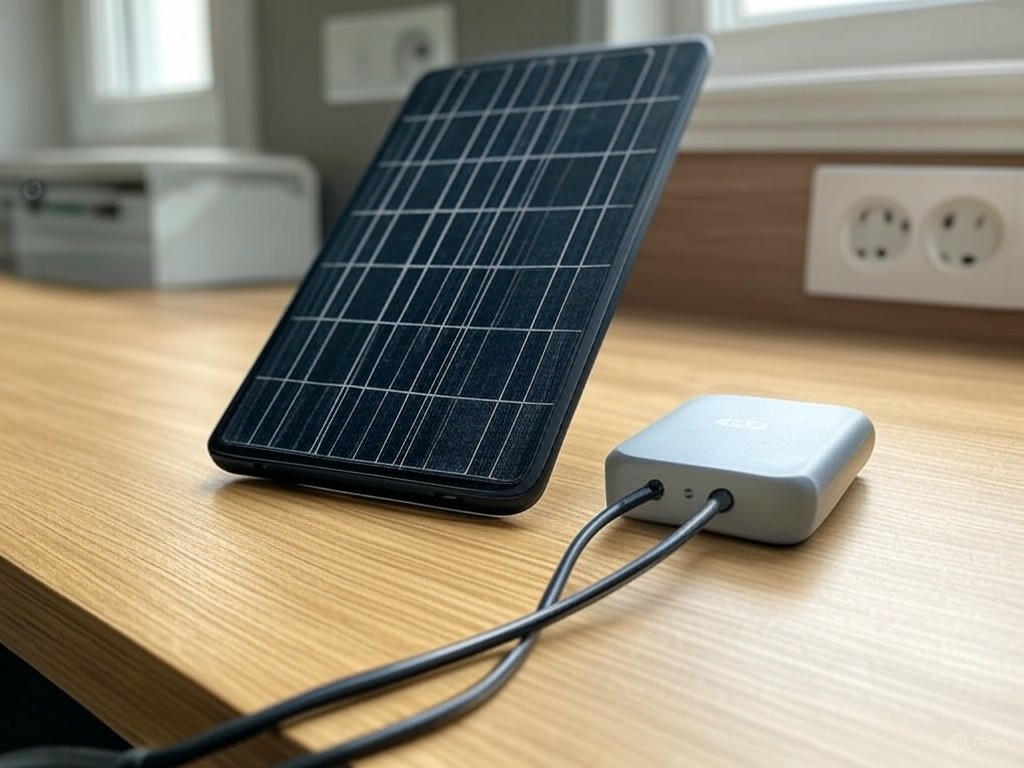
Comparative Analysis: Green Tech Gadgets Versus Traditional Alternatives
Evaluating green tech gadgets such as solar chargers and smart plugs against their traditional counterparts requires a critical look beyond marketing claims. It is essential to focus on measurable performance, durability, real user impact, and environmental benefits. While the promise of sustainability is compelling, the reality involves trade-offs related to cost, convenience, and lifespan.
Energy Consumption and Environmental Impact
Solar chargers and smart plugs significantly reduce energy consumption compared to conventional devices, although the extent of their benefits varies by product type and usage context.
-
Solar Chargers: Residential solar panel installations for EV charging represent one of the cleanest and most cost-effective solutions over time. According to SolarReviews, a typical home setup with 6 to 8 monocrystalline panels costs around $7,200 and sufficiently covers average EV charging needs. This approach reduces reliance on grid electricity and lowers carbon emissions substantially across the charger’s lifespan.
-
By contrast, public solar EV chargers have demonstrated less favorable outcomes. Cities like Tumwater and Bellingham in Washington invested up to $100,000 per unit in solar chargers, which generated substantially less electricity than traditional grid-connected chargers. This results in poor return on investment and minimal CO₂ emission reductions, underscoring that not all solar implementations deliver equal sustainability gains.
-
Smart Plugs: Within households, smart plugs effectively reduce phantom energy loads—the electricity consumed by devices when turned off but still plugged in. Quality smart plugs like TP-Link’s Kasa Smart Wi-Fi Plug Slim can save homeowners several hundred dollars annually by automatically cutting power to idle appliances. For context, smart thermostats provide 10-15% savings on heating and cooling bills, and smart lighting can reduce electricity use by up to 75% compared to incandescent bulbs.
-
Although energy savings from smart plugs are modest individually, their cumulative impact across multiple devices is meaningful. Unlike solar panels, smart plugs require minimal upfront investment—often under $20 per unit—making them an accessible entry point for energy-conscious consumers.
Build Materials, Durability, and Total Cost of Ownership
Upfront costs, build quality, and lifespan are crucial considerations for consumers comparing green tech gadgets with traditional alternatives.
-
Solar Panels and Chargers: Cutting-edge solar technologies in 2025, including perovskite solar cells and bifacial panels, deliver higher efficiencies (up to 24.1% under STC) and extended lifespans. Industry leaders typically offer warranties up to 15 years, with companies like 8MSolar providing lifetime coverage. However, installation remains a significant initial expense that often requires professional services.
-
Modern monocrystalline solar panels are engineered for durability, with robust weather resistance and the ability to withstand environmental stressors. Innovations such as floating solar farms and building-integrated solar windows further expand potential applications while potentially lowering maintenance needs.
-
Smart Plugs: These devices generally utilize consumer-grade plastics and electronics. Durability varies by brand and model. For example, TP-Link’s Kasa Smart Wi-Fi Plug Slim is praised for reliable performance and comprehensive app integration, supporting Alexa, Google Home, and Apple HomeKit.
-
Outdoor-rated smart plugs like the TP-Link Tapo TP25 offer IP65 weather resistance, addressing concerns about longevity in harsh environments. However, lower-cost models may have shorter lifespans, necessitating replacement every few years.
-
From a cost perspective, smart plugs have low upfront prices and minimal maintenance requirements. Their total cost of ownership is often limited to the initial purchase since the plug’s own power consumption is minimal, and energy savings can offset this quickly.
Trade-Offs: Repairability, User Convenience, and Genuine Sustainability
Green tech gadgets provide clear sustainability benefits but come with trade-offs that consumers should weigh carefully.
-
Repairability: Many green tech products, particularly advanced solar panels and smart plugs, have limited repair options. The industry’s focus on sleek design and compactness often conflicts with ease of service. Although “right to repair” initiatives aim to improve this, most smart home devices are replaced rather than repaired, contributing to growing e-waste concerns.
-
User Convenience: Smart plugs excel in convenience, offering remote control, automation, and integration with voice assistants that traditional plugs cannot match. They empower users to optimize energy use effortlessly. Conversely, solar chargers demand more upfront planning, professional installation, and sometimes complex grid integration, which may deter casual consumers.
-
Marketing Versus Reality: Not all green tech innovations fulfill their sustainability promises equally. Publicly funded solar EV chargers with exorbitant costs but low energy output exemplify this disconnect. In contrast, smart plugs that effectively reduce phantom loads provide incremental, reliable energy savings without high expenditures.
-
Genuine sustainability advances arise from technologies that combine energy generation, storage, and intelligent management. Solar generators integrating battery storage and smart power management—such as EcoFlow’s AI-powered Home Energy Management System—offer zero-emission power with safe indoor usability, representing real innovation beyond mere green labeling.
Summary: What to Expect and Prioritize
-
Solar Chargers: Optimal for long-term energy savings and significant CO₂ emission reductions when properly installed in residential settings. However, public solar charging infrastructure may not always justify the high costs.
-
Smart Plugs: Affordable, user-friendly devices delivering practical energy savings and enhanced convenience. Ideal for achieving incremental sustainability improvements in everyday home electronics.
-
Durability and Repairability: Solar panels generally provide robust construction and strong warranty coverage. Smart plugs vary widely in durability; investing in reputable brands ensures better longevity. Repairability remains limited, encouraging replacement over repair and increasing e-waste risks.
-
Cost-Benefit Considerations: Solar technology requires higher upfront investments but yields greater environmental impact reduction over time. Smart plugs offer low-cost, quick wins with smaller overall effects.
For consumers committed to eco-friendly living, combining solar energy generation with smart home devices like plugs and thermostats presents the most balanced and effective approach. It is crucial to avoid overspending on green technology that underperforms and to scrutinize sustainability claims with data-driven evidence.
| Aspect | Solar Chargers | Smart Plugs |
|---|---|---|
| Energy Impact | Significant reduction in energy consumption and CO₂ emissions in residential setups; less effective in public solar EV chargers with poor ROI | Reduce phantom loads; cumulative impact meaningful; modest individual savings |
| Cost | High upfront cost (~$7,200 for home panels); installation often requires professionals | Low upfront cost (under $20 per unit); minimal maintenance |
| Durability & Build | High durability; weather-resistant; warranties up to 15 years or lifetime | Varies by brand; some models weather-resistant (IP65); consumer-grade materials |
| Lifespan | Long lifespan with robust warranties | Shorter lifespan; may require replacement every few years |
| Repairability | Limited repair options; focus on sleek design limits servicing | Limited repair; often replaced rather than repaired |
| User Convenience | Requires planning and installation; complex grid integration | High convenience; remote control, automation, voice assistant integration |
| Environmental Benefit | High when properly installed residentially; questionable in some public implementations | Incremental but reliable energy savings; accessible entry point |
| Typical Warranty | Up to 15 years, some lifetime coverage | Varies; brand dependent |
| Examples | Monocrystalline panels, perovskite cells, bifacial panels | TP-Link Kasa Smart Wi-Fi Plug Slim, TP-Link Tapo TP25 (outdoor rated) |
Practical Considerations: User Experience, Maintenance, and Real-World Challenges
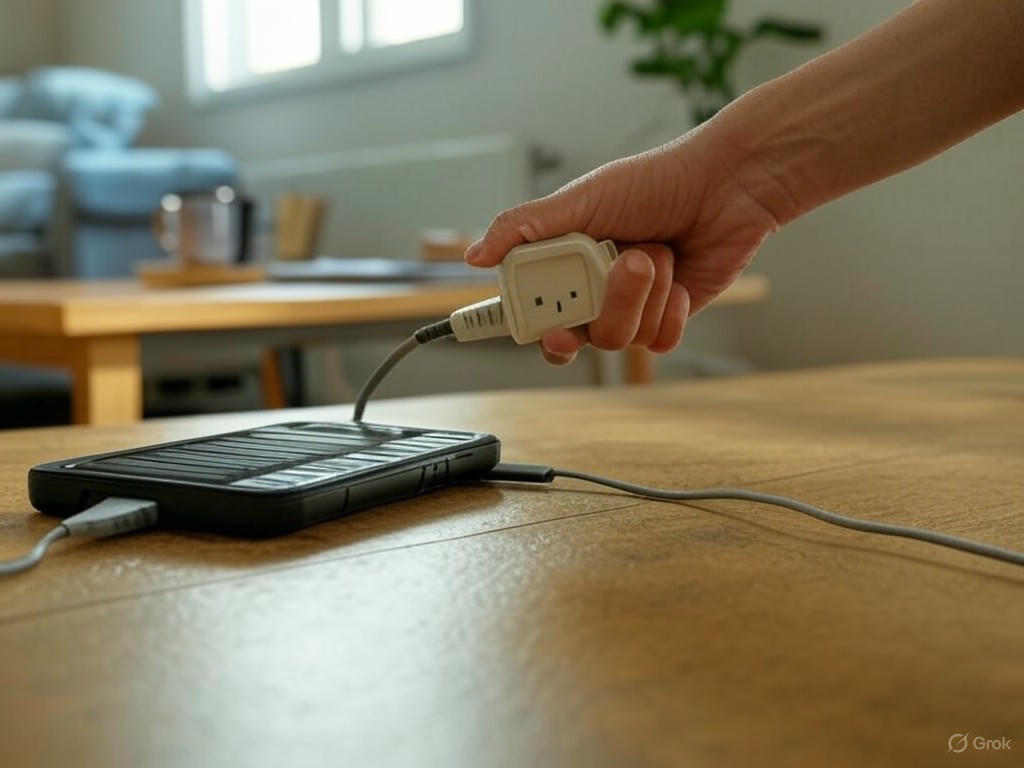
Practical Considerations: User Experience, Maintenance, and Real-World Challenges
When assessing green tech gadgets like solar chargers and smart plugs, the reality often diverges from marketing claims. Based on over eight years of consumer tech testing, practical elements such as setup complexity, interoperability, maintenance, and environmental constraints largely determine whether these devices provide genuine sustainability benefits or simply become unused shelfware.
Setup Complexity and Device Interoperability
Solar chargers and smart plugs are typically designed for easy installation, but certain nuances affect their usability and integration in everyday homes.
Solar Chargers:
Portable solar chargers such as the Jackery SolarSaga 100 and BigBlue SolarPowa 28 offer mostly plug-and-play convenience. They recharge devices via USB ports or through built-in power banks. However, optimal performance requires careful panel placement and orientation toward sunlight. Users frequently underestimate the impact of tilt angle and shading, which can reduce output drastically.
For larger home solar setups, especially EV chargers, installation becomes more complex. Level 1 chargers (1.2–1.4 kW) are simpler and suitable for smaller systems. In contrast, Level 2 chargers (up to 11.5 kW), like the Wallbox Pulsar Plus, demand professional hardwiring, dedicated 60-amp circuit breakers, and integration with home solar management systems to ensure safety and efficiency.
Smart Plugs:
Smart plugs represent one of the lowest barriers to green tech adoption. Devices like the TP-Link Kasa Smart Wi-Fi Plug Mini and Emporia 15W smart plug connect rapidly—often within 30 seconds—and support major ecosystems including Alexa, Google Home, and sometimes Apple HomeKit. Compatibility varies; for example, TP-Link’s Kasa line offers broad support, whereas the Amazon Smart Plug works exclusively with Alexa.
Emerging standards like Matter promise seamless cross-platform interoperability, but consumer awareness and adoption are still limited. Connectivity challenges may arise, particularly on congested or unstable Wi-Fi networks, requiring occasional troubleshooting or firmware updates.
Maintenance Requirements and Performance Limitations
Ongoing maintenance is essential to sustain performance but is often overlooked by users.
Solar Chargers:
Solar panel efficiency depends heavily on lighting conditions. During cloudy or overcast winters, output can drop to near zero—users report as little as 0–2 watts. Advanced panels using high-efficiency N-type silicon cells, such as those from Aiko Solar or Longi’s HPBC technology, perform better but still experience diminished output in diffuse light.
Maintaining optimal panel angle and regular cleaning to remove dust, snow, or debris is critical. MPPT (maximum power point tracking) charge controllers significantly enhance energy harvest compared to basic PWM controllers, especially under variable sunlight.
Durability and waterproofing vary widely; for instance, the EcoFlow 110 stands out as one of the few fully waterproof large panels. Battery-integrated solar chargers like the Hiluckey HIS025 25000mAh Power Bank simplify maintenance by combining energy generation and storage, but internal batteries degrade over time and require proper charge cycle management.
Smart Plugs:
Firmware updates are a continuous but often invisible maintenance task. Some manufacturers push updates automatically, which can occasionally introduce bugs or connectivity issues. User reviews highlight variability in app quality—Leviton’s app is praised for stability, whereas GE’s Cync app has faced criticism for connectivity problems.
Physical durability is generally strong for indoor plugs. Outdoor models, such as the TP-Link Tapo TP25, require weather resistance ratings (IP65 or higher) to avoid premature failure. Users should periodically test responsiveness and reset plugs if they become unresponsive—a common and effective troubleshooting step.
Real-World Challenges and Reliability Insights
Long-term user feedback reveals both the potential and limitations of these green tech gadgets.
Solar Chargers:
Extensive testing and consumer reports identify the Jackery SolarSaga 100 as the benchmark for balancing portability, power, and durability in camping and light off-grid use. It reliably charges phones and small devices, supporting simultaneous multiple-device charging. However, in less sunny climates, charging times slow considerably, underscoring the need for supplemental power sources.
Larger home solar generators like the Jackery Explorer 2000 Plus or Bluetti EB3A deliver robust off-grid power but require significant upfront investment and physical space. Warranty coverage (commonly 24 months) and customer support quality vary by brand, influencing long-term reliability.
Smart Plugs:
The TP-Link Kasa Smart Plug Mini consistently ranks as the top choice for most users due to reliable connectivity, ease of setup, and broad ecosystem compatibility. For energy-conscious users, Emporia’s smart plug stands out with detailed energy consumption data, enabling smarter power management and waste reduction.
Dual-outlet models like the Meross WiFi Dual Smart Plug add convenience but may complicate scheduling and control. Common issues include occasional connectivity drops and confusing app interfaces around scheduling features. Multi-user control, available on models like the TP-Link Tapo TP25, enhances shared household management but requires careful user coordination to prevent conflicts or unauthorized access.
Best Practices for Maximizing Lifespan and Eco Benefits
To maximize the environmental and practical value of green tech gadgets, users should adopt these best practices:
-
Solar Chargers:
- Adjust panel tilt and orientation seasonally to match your latitude and sunlight conditions.
- Keep panels clean of dust, dirt, snow, or debris to maintain optimal energy capture.
- Prefer MPPT-compatible charge controllers to improve efficiency under variable light conditions.
- Avoid deep discharges of integrated power bank batteries to extend their operational lifespan.
- Consider connecting multiple panels for increased or more consistent power output.
-
Smart Plugs:
- Select models compatible with your existing smart home ecosystem to simplify setup and daily use.
- Regularly update firmware and app software to benefit from security patches and performance improvements.
- Test device responsiveness periodically and perform resets if connectivity issues arise.
- Utilize energy monitoring features to identify standby power drains and reduce wasteful consumption.
- For outdoor use, choose plugs with certified weather resistance (IP65 or higher) to ensure durability.
Conclusion
Green tech gadgets such as solar chargers and smart plugs offer tangible environmental benefits when chosen and maintained with practical considerations in mind. The most effective devices combine advanced technical specifications with user-friendly design and reliable real-world performance.
By understanding installation requirements, ensuring interoperability, and acknowledging inherent limitations—such as reduced solar efficiency in low light or occasional smart plug connectivity quirks—users can optimize their setups and avoid common pitfalls. With attentive care and informed choices, these tools form a vital part of an effective, sustainable home energy ecosystem.
| Aspect | Solar Chargers | Smart Plugs |
|---|---|---|
| Setup Complexity |
|
|
| Maintenance Requirements |
|
|
| Performance Limitations |
|
|
| Real-World Reliability |
|
|
| Best Practices |
|
|
Future Trends in Green Tech Gadgets: Innovations and Market Outlook
Future Trends in Green Tech Gadgets: Innovations and Market Outlook
Breakthroughs in Photovoltaic Materials and AI-Driven Energy Management
Solar technology continues to advance rapidly, enhancing the efficiency and practicality of eco-friendly gadgets like solar chargers. Recent innovations in photovoltaic materials have pushed conversion efficiencies beyond 20%, with top-tier monocrystalline panels reaching up to 24.1% under Standard Test Conditions (STC). Key technologies include N-type back-contact (IBC) cells and heterojunction (HJT) designs, which offer superior durability, longer lifespans, and better resistance to power degradation compared to older polycrystalline panels.
Bifacial solar panels are gaining traction by capturing sunlight on both sides, increasing energy output through reflected light from surfaces such as rooftops or water bodies. Emerging materials like perovskite and tandem cells promise even higher efficiencies, potentially revolutionizing portable solar power solutions by 2025. Transparent solar panels, suitable for window integration, offer aesthetic-friendly options that blend seamlessly into architectural designs.
On the software front, AI-driven energy management systems are transforming how energy is consumed and stored. For instance, EcoFlow’s AI-powered Home Energy Management System claims up to a 77.6% reduction in energy bills by intelligently optimizing solar usage and battery storage. These systems, combined with smart inverters and IoT-enabled sensors, enable dynamic adjustment of appliance operation based on real-time energy availability and demand, maximizing efficiency and minimizing waste.
Consumer Demands and Regulatory Pressures Shaping Sustainable Design
Sustainability is no longer niche; it is a mainstream consumer demand reshaping product development. Buyers increasingly expect transparency and eco-conscious design, pushing manufacturers to prioritize durability, reusability, and recyclability in accordance with circular economy principles. Environmental reporting requirements and stricter carbon management standards hold companies accountable, ensuring green claims are substantiated by measurable outcomes.
Energy efficiency remains a critical purchasing factor. Smart plugs and home automation devices that reduce standby power consumption and support cross-platform interoperability—especially via the emerging Matter protocol—are popular. This interoperability meets consumer expectations for seamless convenience and granular control while reducing unnecessary electricity use.
Despite progress, sourcing truly ethical and sustainable electronics remains challenging. Extending device lifecycles through refurbishing and recycling is often the most practical consumer approach, as completely avoiding new purchases is not always feasible. Regulatory oversight is increasing to combat greenwashing, making verified sustainability commitments essential for brand credibility.
Market Outlook: Scaling Green Tech Adoption Amid Opportunities and Challenges
The green tech gadget market is experiencing robust growth. The Green Technology and Sustainability sector is projected to grow from USD 24 billion in 2024 to USD 67.6 billion by 2030, with a CAGR exceeding 23%. Cloud-based energy management and IoT connectivity play dominant roles, enabling scalable and flexible solutions attractive to both consumers and businesses.
Asia Pacific is leading this surge, driven by significant investments in renewable infrastructure and supportive policies. Innovations such as floating solar farms and community solar projects address energy access challenges in urban and rural areas alike, catalyzing regional adoption.
However, barriers remain in scaling green tech across diverse user segments. High upfront costs—especially for integrated solar systems and EV chargers—limit accessibility. Infrastructure gaps, consumer misconceptions, and complex regulatory environments further slow adoption. Overcoming these hurdles requires coordinated efforts involving economic incentives, consumer education, and technology standardization.
Biodegradable electronics and organic semiconductors are emerging as promising solutions to reduce e-waste. These technologies aim to enable devices that naturally decompose after use without releasing harmful residues, potentially redefining product lifecycles and environmental impact in the near future.
Key Takeaways
- Advances in solar panel technology—including bifacial, perovskite, and transparent panels—are raising efficiency standards and expanding applications for solar-powered gadgets.
- AI-powered energy management systems demonstrate significant potential to reduce energy bills and optimize renewable energy use at the consumer level.
- Heightened consumer and regulatory demands drive manufacturers toward circular, transparent, and durable product designs, fostering genuine sustainability.
- The green tech market is growing rapidly, particularly in the Asia Pacific region, though cost and infrastructure challenges must be addressed for widespread adoption.
- Biodegradable and organic electronics represent a frontier innovation with the potential to drastically reduce electronic waste and support truly sustainable gadget ecosystems.
These trends signal a future where green tech gadgets become smarter, more efficient, and environmentally responsible—delivering practical solutions that extend well beyond buzzwords. For eco-conscious consumers, investing in these technologies today supports a more sustainable and connected tomorrow.
| Category | Trend / Innovation | Details |
|---|---|---|
| Photovoltaic Materials | Monocrystalline Panels | Up to 24.1% efficiency under STC; N-type back-contact (IBC) and heterojunction (HJT) designs for durability and low degradation |
| Photovoltaic Materials | Bifacial Solar Panels | Capture sunlight on both sides, increasing energy output via reflected light |
| Photovoltaic Materials | Emerging Materials | Perovskite and tandem cells with higher efficiencies expected by 2025; Transparent solar panels for window integration |
| Energy Management | AI-Driven Systems | Example: EcoFlow’s AI Home Energy Management System reduces energy bills by up to 77.6% through optimized solar and battery usage |
| Energy Management | Smart Inverters & IoT Sensors | Enable dynamic appliance operation based on real-time energy availability and demand |
| Consumer Demands | Sustainability Expectations | Focus on transparency, durability, reusability, recyclability, and circular economy principles |
| Consumer Demands | Energy Efficiency | Smart plugs and home automation reduce standby power; support interoperability via Matter protocol |
| Market Outlook | Growth Projections | Green tech market growing from USD 24B (2024) to USD 67.6B (2030) with >23% CAGR |
| Market Outlook | Regional Leadership | Asia Pacific leads adoption driven by investments and supportive policies |
| Market Outlook | Challenges | High upfront costs, infrastructure gaps, consumer misconceptions, and regulatory complexity |
| Future Innovations | Biodegradable Electronics | Organic semiconductors and biodegradable devices to reduce e-waste and environmental impact |



